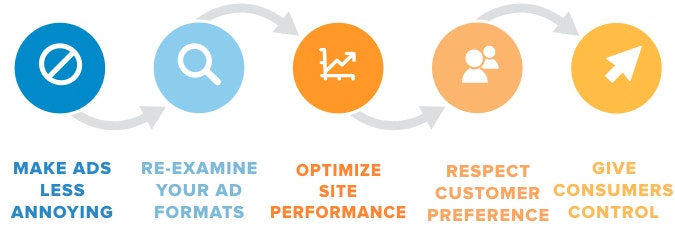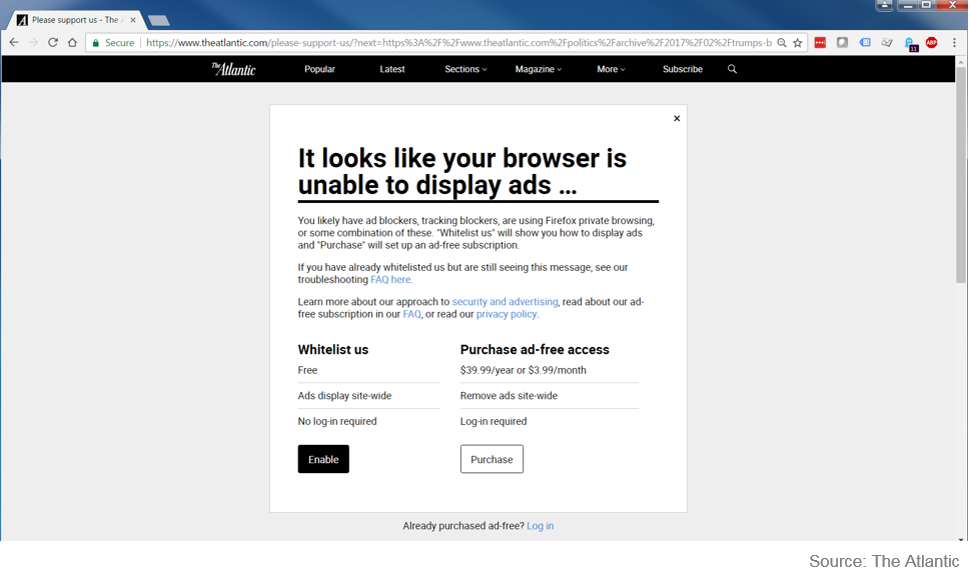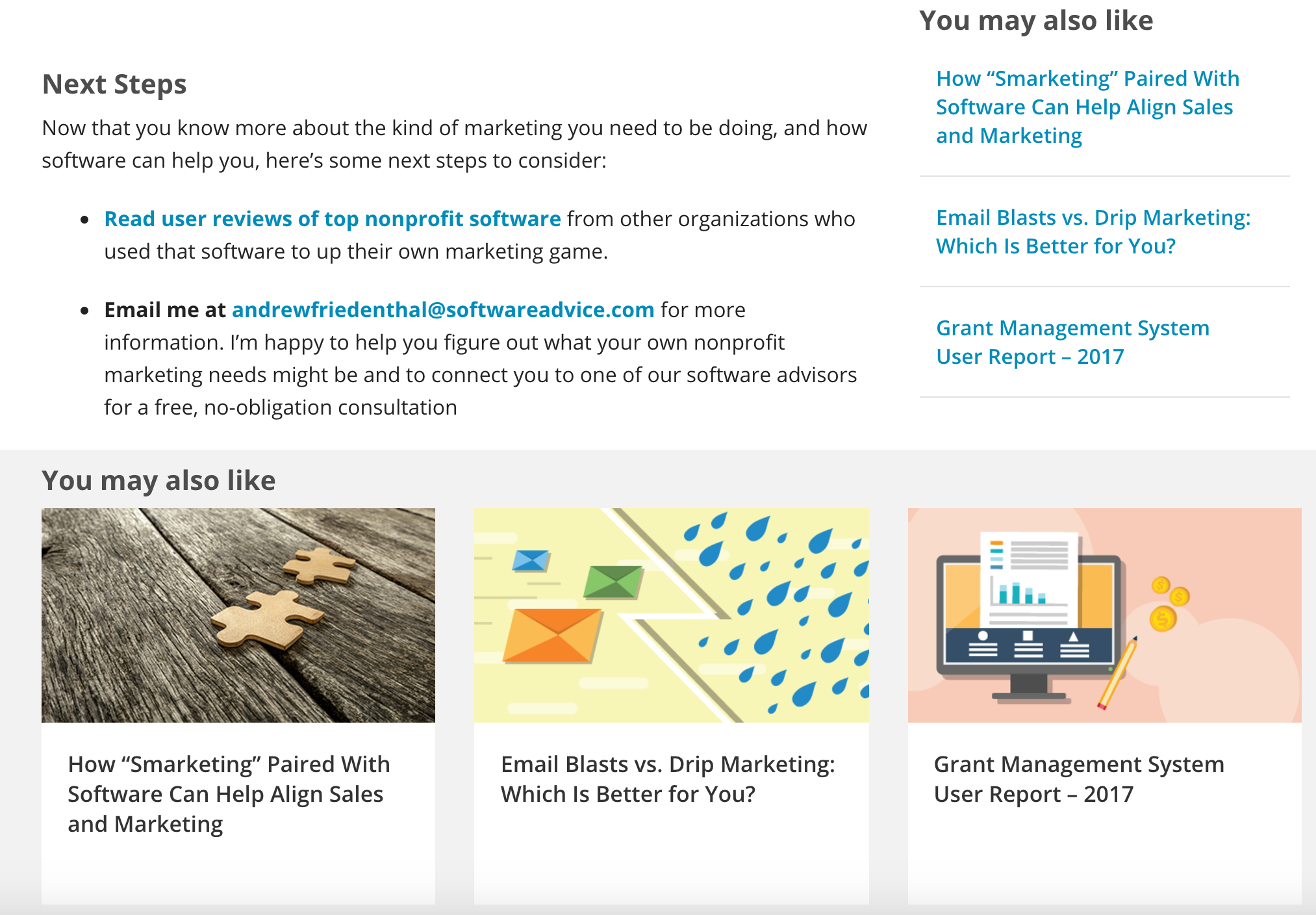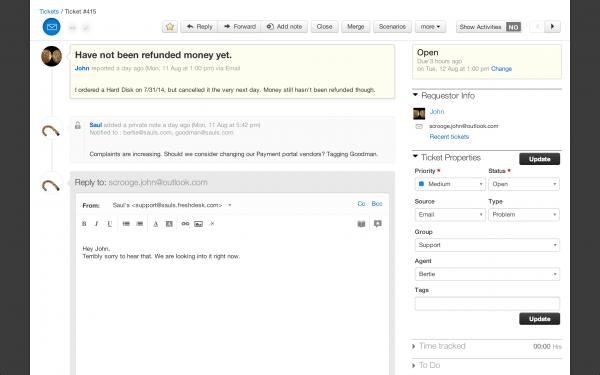How to Succeed at Marketing in the Age of Adblock
I have ad-blocking software installed on my internet browser. You probably do too. These helpful products prevent websites from bombarding you with a variety of advertisements, ranging from pop-ups, to sidebar ads, to the clips that come in front of YouTube videos.

There are a lot of pop-ups sometimes
Marketers are less enthusiastic about these tools, and overcoming ad-blocking has become a cottage industry. But given the cost of developing these skills and the risk of agitating visitors who want to read your content, this often feels like a battle with no winners.
Rather than finding tricky ways to beat ad-blocking software, marketers need to take a whole new approach to advertising online—transparent marketing.
In this piece, we’ll discuss implementing transparent marketing for your small-to-midsize business (SMB):
Here are the big questions that we’ll answer:
What Is Transparent Marketing?
How Can I Use Transparent Marketing?
What Tools Can Help My Transparent Marketing Efforts?
What Is Transparent Marketing?
Gartner analyst Lizzy Foo Kune explores the challenges faced by marketers in the age of ad-blocking in her article Understand and Overcome the Ad-Blocking Arms Race (available to Gartner clients). She comes to the conclusion that digital advertising marketers must:
Make ads more relevant—they should be targeted, at the right point in the journey, unobtrusive and high-quality.
Respect consumer choice as it pertains to privacy preferences. These indicators can even be used to increase advertising effectiveness through segmentation initiatives.
Be transparent about the data you collect and how it can be used for advertising. Encourage customers to take an active role in managing their privacy preferences.
She further breaks down the process that marketers should follow into a series of actionable steps:

Of these steps, the two most important for transparent marketing are “Respect customer preference” and “Give consumers control.” Here’s what each of those means in the context of SMBs:
Respect customer preference. Some websites, such as the Atlantic magazine, created “ad-block walls” in response to the increasing popularity of ad-blocking. These walls prevented ad-block users from gaining access to the site. Other sites, such as Forbes, chose to create more limited walls that asked users to turn ad-blocking off for their particular site.
However, these tactics can prove very unpopular, with Foo Kune citing that nearly three-quarters of ad-block users report leaving websites that ask them to disable their ad blockers. Websites like the Atlantic or Forbes may be able to withstand losing that much traffic, but the web page for your SMB likely will not.
Consequently, it’s vital to know if the users of your own website are willing to disable ad-blockers, and then respect their preferences based on what the data shows you.
Foo Kune recommends using customer experience analytics “to evaluate your customers’ receptivity to advertising and to gauge their outlook on privacy” and then “segment audiences according to customers’ privacy preferences.”

The ad-block wall on The Atlantic‘s website (March 2017).
Give consumers control. Consumers are becoming increasingly concerned about the use of their private data, and thus issues of privacy have become paramount in digital marketing. As a result, your company needs to be very transparent about data collection.
This includes clearly and directly explaining what data you collect from your consumers, as well as why and how you use that data. You also need to solicit their feedback to learn how their view of data and privacy aligns with yours.
If you can do that, then you can find ways to use their data to market to them directly, without having to worry about costly website ads that may just get blocked anyway.
Transparent marketing encompasses two key principles—respecting your customers’ choices and giving them control over both their data and how you use that data to reach them.
How Can I Use Transparent Marketing?
The article you’re reading right now serves two purposes—to provide you with helpful information about transparent marketing, and to encourage you to use Software Advice’s services to help figure out your company’s software needs.
The only way for us to achieve the latter, though, is to focus on the former.
Nothing in this article is trying to directly sell you on Software Advice. Rather, we’ve done research on a topic that we think is legitimately helpful to SMB marketers. If you find our advice useful, you’re likely to come back to read more, and thus also likely to trust our other services.

Note the clear, brief description of Software Advice services at the end of a recent article
In essence, this article is a form of transparent marketing. Inbound content marketing—creating content to draw interested readers to your website—is a form of marketing that doesn’t need to worry about ad-blocking.
If you’re providing helpful and useful content, customers will come to you, instead of you having to foist yourself upon them.
As Brianna Valleskey of Brave Ink LLC advises:

In the digital age, no one wants to be sold to. Everyone can see right through your sales pitch. Instead, be transparent in communicating what you do and how it helps your customers.
Brianna Valleskey, owner, Brave Ink LLC
In order to make this communication effective, she explains:
“You must clearly define what your business does and how it will help the businesses or lives of your target customers. Clear communication is key. When your messaging is clear, your sales go up. You should be able to explain how your company helps other companies in one to two sentences.”
When you’re consistently helpful, you’ll build up a reputation as a thought expert, leading to trust and transparency with your readers and customers.
As Valleskey explains, “This builds your credibility in your field and demonstrates to consumers that your goal is to help them. Be sure to communicate that you understand your buyer’s pain points, and that you created your product or service to help solve them.”
Being transparent with your customers, in terms of their data usage and the stories that you tell them, is within the reach of any given SMB, but certain tools will make that process much easier.
What Tools Can Help My Transparent Marketing Efforts?
Ben Landers, the president and CEO of digital marketing and analytics company Blue Corona, emphasizes the importance of customer service/experience to a company’s transparent marketing path.
In the case of customer experience, he says, “So many companies invest money in traditional advertising and short-change various parts of the customer experience.”
Gartner defines customer experience as “the customer’s perceptions and related feelings caused by the one-off and cumulative effect of interactions with a supplier’s employees, systems, channels or products.” This means that customer experience encompasses every potential interaction with your customers, from pop-up ads to helpful content to call center conversations.


An example of Freshdesk’s use of ticketing to help manage customer experience
Fortunately, software can help you with all these various aspects of marketing, allowing you to be transparent and successful in your efforts. The types of software you can utilize include:
Customer experience software. Customer experience software helps orchestrate all customer-facing processes, across all departments, in order to improve the customer’s experience. They help ensure that a company presents a singular experience across all contact channels and in a range of contexts from sales and marketing to customer service.
Marketing software. Marketing software helps businesses reach out to customers and prospects by streamlining and automating many marketing campaign tasks. Systems typically offer features such as email marketing automation, social media management, lead generation/management and analytics tools that measure the success of campaigns.
Marketing analytics software. Marketing analytics software enables businesses to collect information and measure the relative success of marketing campaigns in order to inform decision-making and generate a higher return on investment per campaign.
Content marketing platforms. Content marketing software provides tools that help marketers distribute and share content both within and outside of their company, with features and capabilities such as campaign management, audience targeting, editorial calendars and multichannel publishing.
Using these tools, you should be ready to transcend ad-blocking with a new marketing approach that focuses on transparently reaching out to your customers, and not just struggling to reach them at all costs.
Next Steps
People use ad-blocking applications because they don’t want their online experience ruined by unwelcome intrusions. Thus, the best way to reach those potential customers is to find a way to become a part of that experience organically and transparently.
Here’s some next steps to consider as you plan those more transparent marketing campaign:
Read user reviews of top marketing software to see how other marketers have used technology to master marketing.
Email me at andrewfriedenthal@softwareadvice.com for more information. I’m happy to help you figure out what your own marketing needs might be and to connect you to one of our expert software advisors for a free, no-obligation consultation!